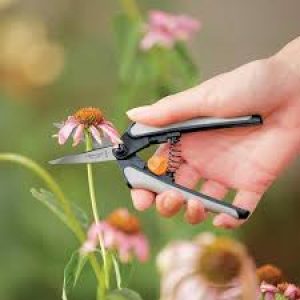By Katie Goulbourne, Master Gardener in Training, SCMG
Drip irrigation is a system by which water is consistently distributed to the roots of plants. It usually consists of a polyethylene tube system that lays alongside plants and slowly drips water to a specific area. The tube can lay either above or just below the ground. There are several components to a drip irrigation system. There is a main line from the water source that feeds drip irrigation lines thoughout a bed and/or area. The lines can have a variety of emitters or be a porous soaker type hose. There is generally a filter, back flow valve and pressure regulator. End caps will be used to seal off the end of the system and prevent water from leaking out. Drip lines are held in place with stakes/fasteners. In most instances, the system is fed from a plumbed water source. Gravity fed systems can also be set up that use barrels and gravity or a pump can be used to aid in the distribution of the water.

The main types of drip irrigation are:
Porous Pipe Drip Irrigation
Porous pipe, more commonly known as soaker hose, is the least expensive option. This can refer to a soaker hose or a hose that has tiny holes placed throughout the tubing. It is also the easiest to set up. The soaker hose can be laid on the ground around the plants and throughout the garden. Once it is connected to the main water source and turned on water will slowly seep into the ground and roots of the plants. The hose can be easily manouvered and moved around to various areas.
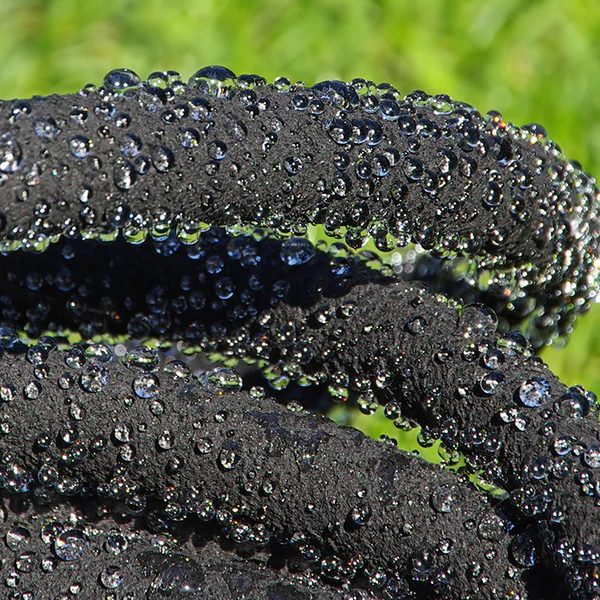
Pre-Installed Emitters Lines Drip Irrigation
Pre-installed drip irrigation consists of tubing that has emitters already in the tubing usually at intervals of 12 to 36 inches apart. The tubing is usally 1/4 to 1/2 inch in diameter or can be a flat drip tape. When emitters come pre-installed the set up is easy and simple. Unfortunately, the gardener has less control over the placement of the emitters around the plants and therefore the water might not be “dripping” in the best proximity to the roots of the plants.
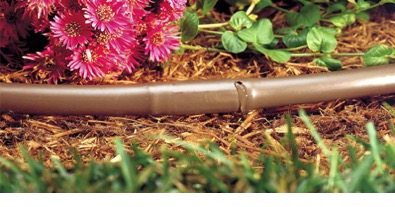
Punch-In Emitters Drip Irrigation
Punch-In emitters allows the the gardener to customize the placement and amount of emitters. This rquires more time to set up but gives the gardener control over where and how much water is delivered. Holes made for the emitters can be plugged and moved if changes are required in the set up. Different types of emitters can be used based on the system setup and circumstances (ie-pressure compensating emitters, turbulent flow emitters or short path emitters). Although many advise against the practice of burying emitters they can be buried but would require emitters for a “subsurface drip irrigation system”. Some problems that can occur with subsurface systems include roots clogging the emitters. Problems such as root clogging or damage from animals, etc can be difficult to detect early on and can be difficult to rectify below the surface.
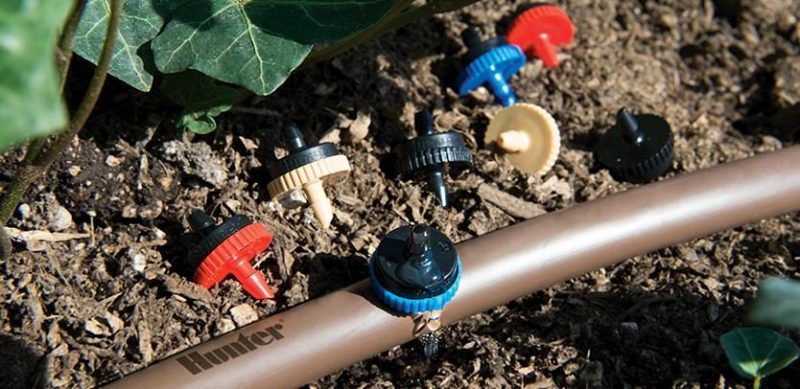
Micromisting System
Micromisting systems deliver a large volume of water over a large area. Used in areas where it would be difficult to use individual emitters such as ground cover areas. It can be used to cool roots and refresh shallow rooted plants as opposed to saturation. This type of irrigation system is typically used in orchards and vineyards.
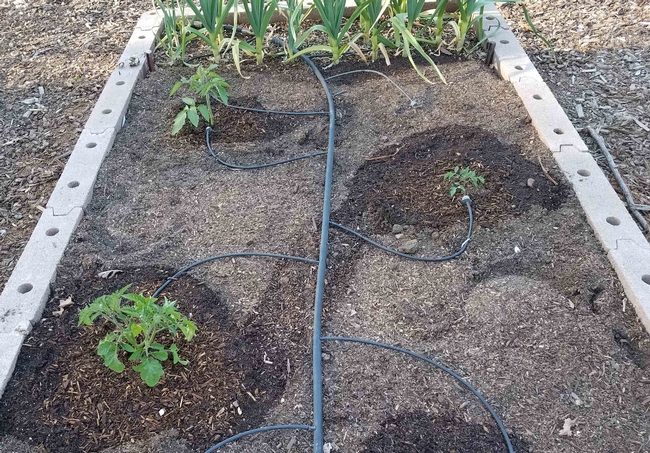
A drip irrigation system will take more time and expense to set up initially and will require ongoing maintenance but the many benefits will generally outweigh any disadvantages. Once set up the system can be put on a timer delivering water consistently. A decrease in water usage will also be noticable as the water is delivered directly to the plant roots resulting in less evaporation, erosion and run off. Fertilizer can also be delivered through irrigation. Another highlight includes less weed pressure as the water is going directly to the plants and starving the weeds of water. Pots and containers can also be set up on drip.
There is a wide variety of brands and systems available for drip irrigation. Many companies specialize in irrigation and are most helpful in assisting with initial setup needs and ongoing maintenance. With some research and investigation a solution that suits your needs is not far away!



